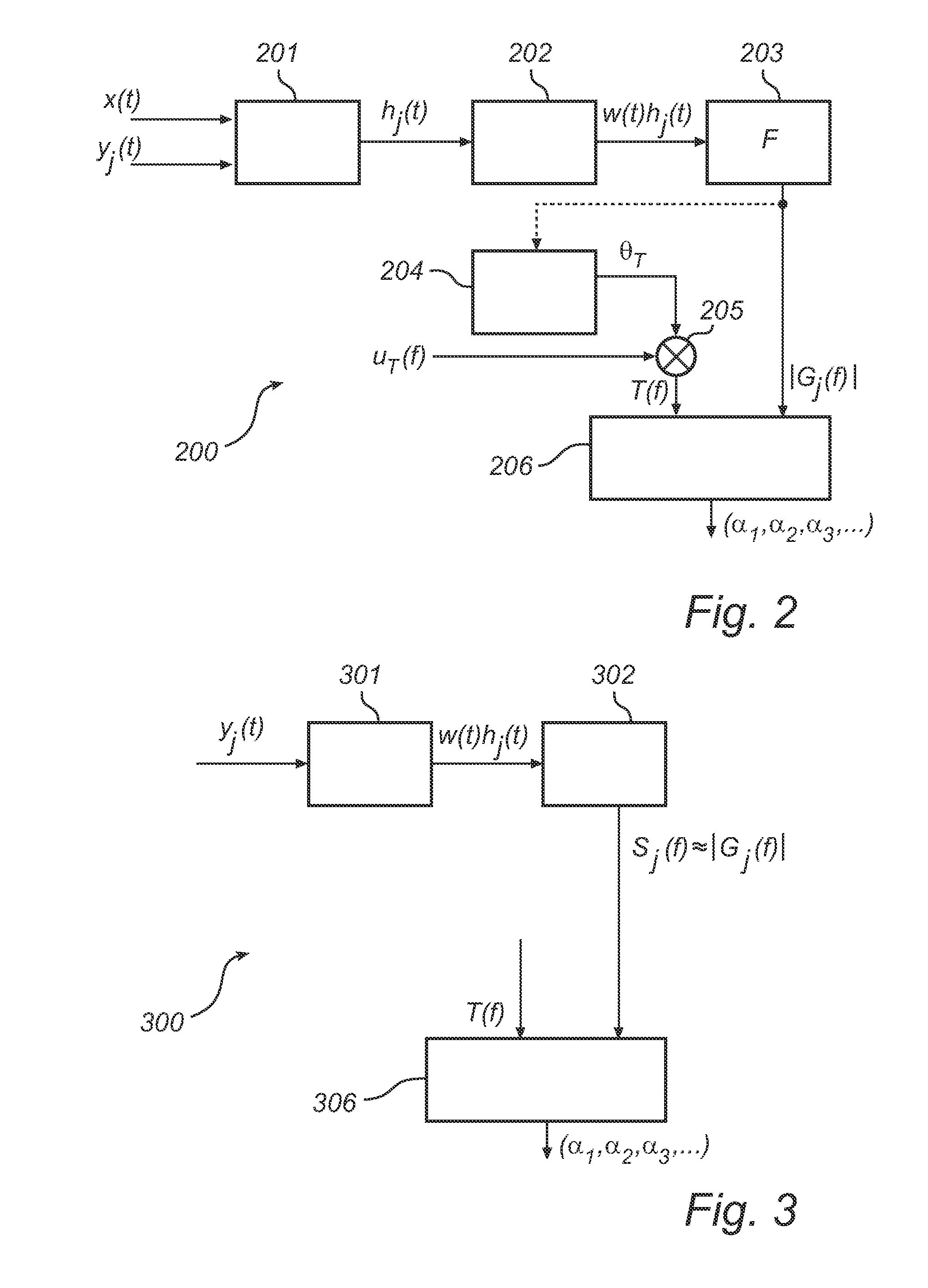Conferencing Device Self Test
a technology of conferencing device and self-testing, which is applied in the direction of electrical transducers, transmission monitoring, electrical apparatus, etc., can solve the problems of algorithmic performance compromise, speaker-to-microphone coupling not presupposing uniformity of approach, and the response of individual transducers can vary significantly
- Summary
- Abstract
- Description
- Claims
- Application Information
AI Technical Summary
Benefits of technology
Problems solved by technology
Method used
Image
Examples
example embodiments
II. Example Embodiments
[0046]FIG. 2 is a generalized block diagram of a controller 200 according to an example embodiment, the controller 200 being adapted to interact with a plurality of acoustic sensors and at least one audio source. The sensors and source(s) may be of similar types and may be similarly arranged as the sensors 111, 112, 113 and sources 121, 122 located in the environment 102 shown in FIG. 1. A deconvolution section 201 receives at least a time-dependent output yj(t) of a sensor and deconvolves the output to provide a time-dependent impulse response ha for the sensor in respect of the audio source(s) producing the stimulus. The deconvolution may be enabled at least by one of the following options:[0047]a) The deconvolution section 201 receives, as shown in FIG. 2, a copy of the stimulus x(t) supplied to the audio sourc(e) and derives a convolution inverse x−1(t). Preferably, the copy of the stimulus is received in synchronicity with the signal actually supplied to ...
PUM
 Login to View More
Login to View More Abstract
Description
Claims
Application Information
 Login to View More
Login to View More - R&D
- Intellectual Property
- Life Sciences
- Materials
- Tech Scout
- Unparalleled Data Quality
- Higher Quality Content
- 60% Fewer Hallucinations
Browse by: Latest US Patents, China's latest patents, Technical Efficacy Thesaurus, Application Domain, Technology Topic, Popular Technical Reports.
© 2025 PatSnap. All rights reserved.Legal|Privacy policy|Modern Slavery Act Transparency Statement|Sitemap|About US| Contact US: help@patsnap.com



